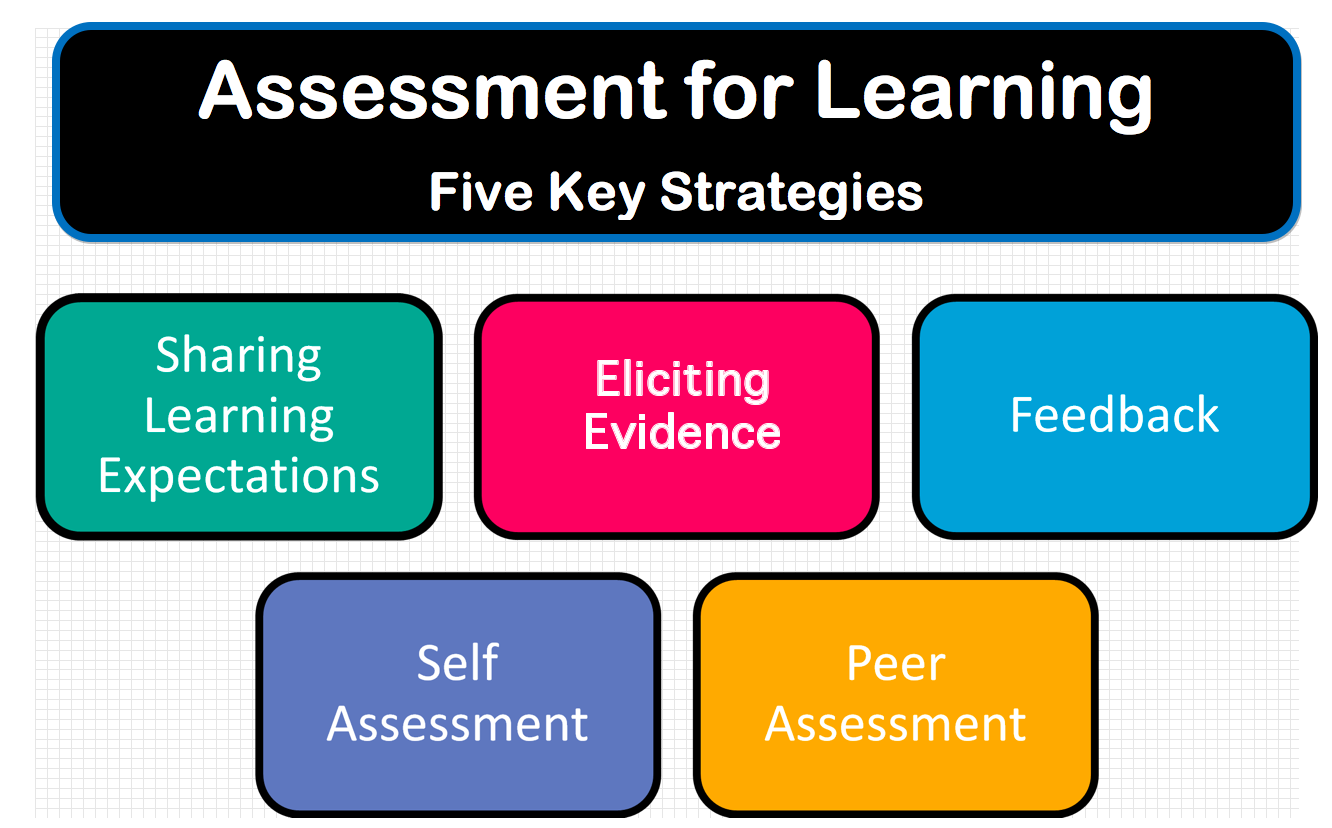Assessment is the way the teacher determines whether or not the student has learned content and whether or not the student has mastered a learning objective. Assessment can be both formal or informal, and a variety of strategies can be used to determine if learning took place and if so, what was learned.
Each week, assessment strategies are provided to teachers in the Principal's Bulletin.
Assessment should be incorporated throughout a lesson for the purpose of learning. Without assessment, it is impossible to determine what instruction a student needs next in the classroom.
Assessment for Learning includes five key components- sharing learning expectations with the students, eliciting evidence of these expectations, feedback to the student, self-assessment by the student and peer assessment by others.
This link includes some additional background and key questions for Assessment for Learning.

Assessment should not always to be teacher-centered. Students can assess their own learning. This is a key component of assessment for learning. Some strategies for student self-evaluation include:
- Create weekly skills check with a tracking chart: students track their own progress on each skill.
- Go over texts after grading them, discussing, "Why is choice A wrong?" and similar questions.
- Have students grade their own assignments based on a rubric.
- Give students independent practice worksheets with answers on the back so that they can check their work once completed.
- Create a cumulative rubric (adding skills as taught): have students do periodic self-evaluations with the rubric.
Another form of assessment is exit tickets. Exit tickets are brief, class-ending activities to check for understanding of that day's lesson. Here are some strategies to improve your exit tickets:
- Create a tracking sheet to match the exit ticket.
- Assess the same skills through varied methods.
- Align format to interim assessment.
- Grade immediately.
- Immediately follow-up with students (if possible).
- Answer essential questions on exit ticket.
- Follow up data from exit ticket with the next day's Do-Now.
- Use exit ticket to determine small group re-teach.
- Monitor whether exit tickets reflect scope and sequence.
Below is more information about exit tickets (or exit slips) from Read Write Think.
The Exit Slip strategy is used to help students process new concepts, reflect on information learned, and express their thoughts about new information. This strategy requires students to respond to a prompt given by the teacher, and is an easy way to incorporate writing into many different content areas. Furthermore, the Exit Slip strategy is an informal assessment that will allow educators to adapt and differentiate their planning and instruction.
- Determine a key concept that you want students to think about or for which you wish to gather information.
- A few minutes before the end of a lesson or class session, distribute the Exit Slips and ask students to respond to a prompt that you pose to the class, related to the day’s lesson or information learned.
- State the prompt orally to the class, post it where students can see it (on the board, chart paper, or projected), or give each student a copy of a prompt chosen from the Exit Slip Printout.
- If you chose to present the prompt orally or post it, provide students with a small piece of paper or index card on which to write their responses, or ask students to record their responses in a notebook or piece of paper of their own.
- You may choose to have a variety of Exit Slips and choose which ones go to which students, further differentiating the process.
- Before students leave the room, collect their Exit Slips.
- Additionally, Exit Slips can be emailed by each student at the end of each session, or they can be a part of an ongoing class blog or wiki.
- Prior to the next session, review all of the students’ Exit Slips to determine how the next class session may need to be structured differently to meet the needs of all learners in your classroom.
- Exit Slips may be collected as a part of an assessment portfolio for each student to document their growth over a certain topic, unit, or school year.
- You may also choose to "publish" your Exit Slips.
- Cut and paste various responses onto a single page. Copy and distribute to each student at the beginning of the next class session.
- Depending on the grade level and time available, ask students to discuss their findings in groups. The following questions can be posed: Are there comments that you agree with or disagree with? Did someone write something that surprises you, or is there something you hadn’t thought of?
No comments:
Post a Comment